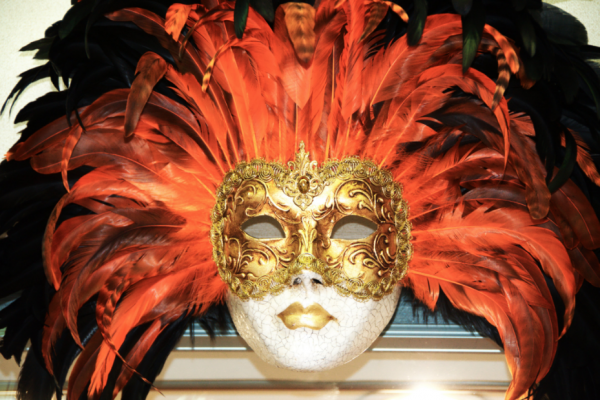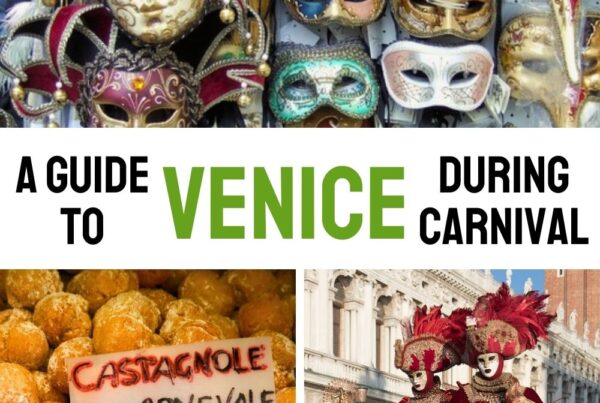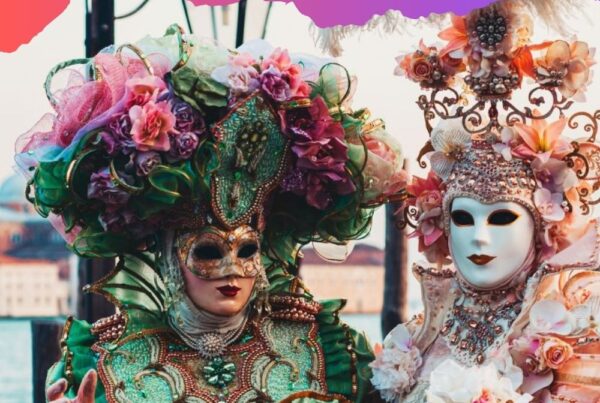Interested in learning more about exclusive private food and wine experiences in and around Venice? Email us!

You probably know all about Mardi Gras in New Orleans, but how about Carnevale in Venice? If you are like me, you probably have never even heard of it before coming to Italy. If you enjoy listening to classic Italian music, eating delicious foods, wearing elaborate masks and costumes and watching magical light shows that involve fascinating stunts, then Carnevale is the festival for you!

The most anticipated season of the year, Carnevale, is celebrated two weeks leading up to the Catholic holiday Lent. People from all over the world travel to Venice to enjoy the marvelous parades, the spectaculars along the Grand Canal, the beautifully crafted masks, masquerade balls, and firework shows.
You will see hundreds of people, young and old, walking around in Renaissance-style costumes and playing pranks on one other. Most of the festivities are centered around Piazza San Marco and the Grand Canal, but you can find mask shops and parties just about anywhere in the “City of Bridges”.

The wearing of these intricately designed masks is an important feature of Carnevale. Customarily, people were allowed to wear masks between the festival of Santo Stefano and the end of Carnevale season and on Ascension until Christmas Day. The masks were worn in order to conceal identities of people committing crimes that were made legal during the celebration of Carnevale.

Venetian masks are traditionally made of leather, porcelain or from a special glass blowing technique. Each type of mask was worn by a specific person. Women typically wore moretta masks because they accentuated their feminine features or a columbina which was half a mask specially made for beautiful actresses who could not hide their beauty, but was eventually adopted by the common woman. Volto masks were worn by men that dressed in black capes and matching hats, or a bauta which had the purpose of covering facial features and keep their identities hidden. These days, they are handmade and have complex designs with feathers, jewels and other decorations and are displayed by everyone.

Why do Italians indulge in so many sweets leading up to Lent? During the 40 days of fasting, parties were off limits along with foods like meat and sugar, so, in an effort to get rid of these temptations, they would throw parties known as Carnevale. Frittelle, or “fritters” are the festivals most famous dessert. These sweet, crispy doughnuts will be the highlight of your trip to Venice. They are made with a heavy dough mixed with pine nuts and raisins, and topped with sugar.

Like most doughnuts or fritters, they come in a variety of styles. Most shops offer the traditional frittella alla crema or frittella con ricotta. If you are luck enough, though, you might stumble across a nontraditional flavor frittella con Nutella. Fortunately, this addicting treat will not break your bank; each one typically costs only 1.50 to 2.00 euro. But, buyer beware…once you have one, you’ll have to have another. And get them while you can because they are exclusive to Carnevale season!










Sounds Fabulous! The masks are beautiful! Where do you get one? Thanks for inviting my appetite for delicious food!